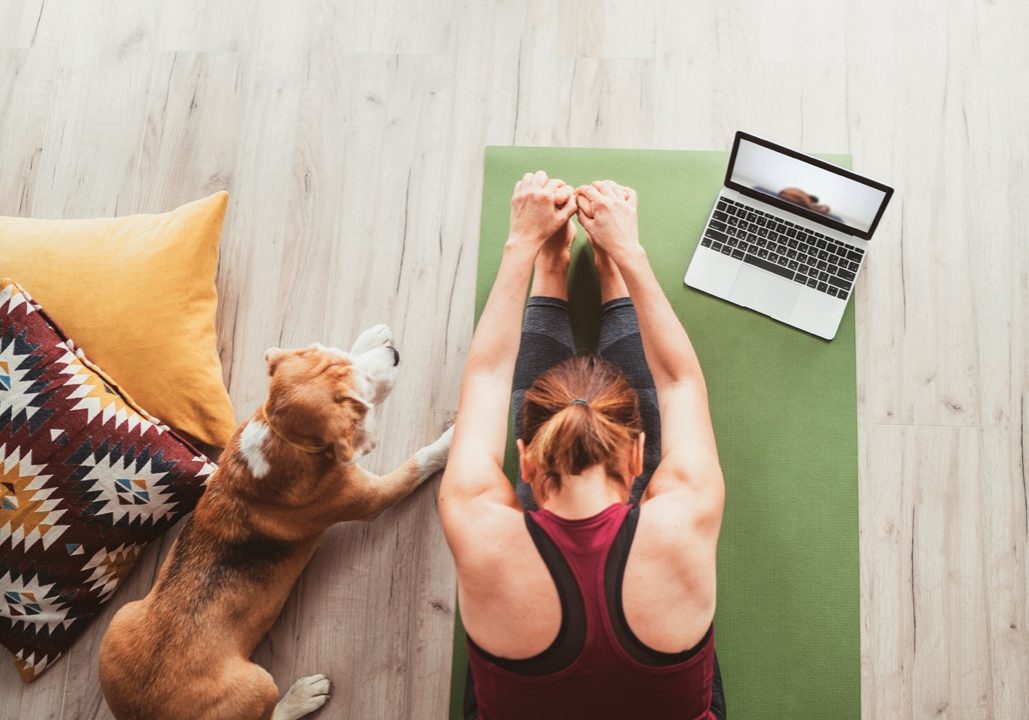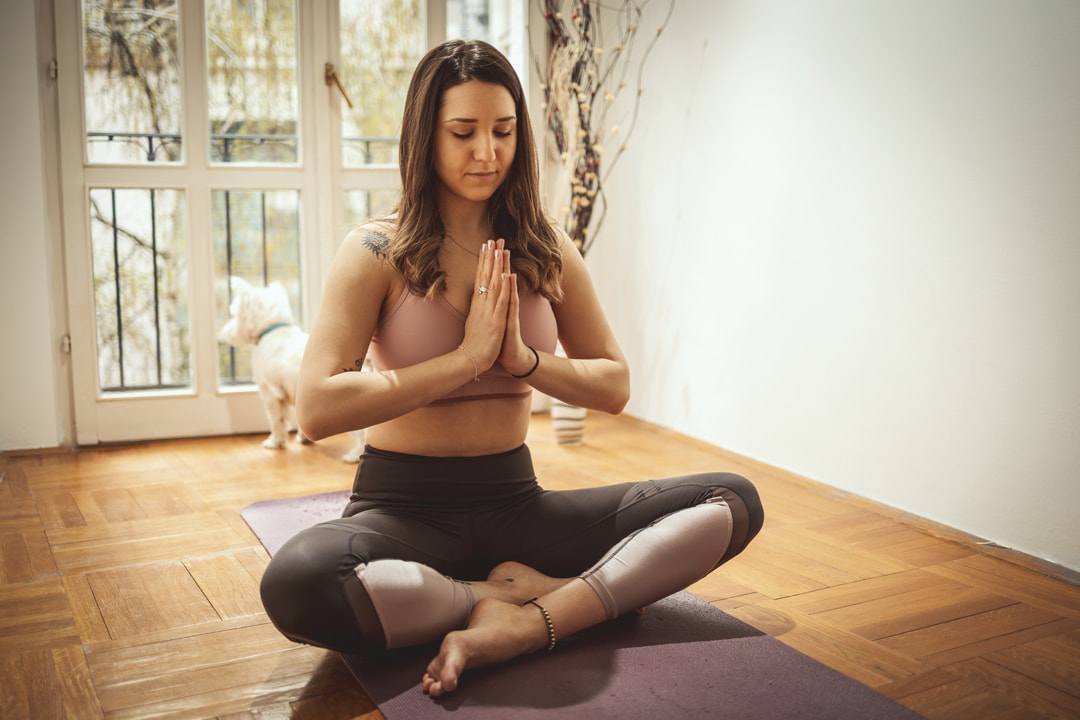
7 attributes of a personal yoga practice
We are made more whole every time we step onto the mat. By Marisa Gray Atha
Before Covid-19 hit, I practiced yoga regularly at a studio in midtown. Yoga Shala was home to a dedicated crew of teachers and community of students. Forty bodies would pack in on a weekend morning, mat to mat, sweating, breathing, and shaping our poses; the heated, humid air multiplied the abundance of physical presence.
In spring of 2020, when the world went dark, streets and businesses left empty, our screens lit up — lifelines to career, education, and community. Shala quickly transitioned its classes to Zoom, leaving us home practitioners to our own whims. We could hide behind our mute buttons and black screens. We had no mat neighbour to keep up with. The teacher was miles away, worlds away.
And yet, it was through the process of practicing in this manner that I moved so much deeper into my practice. . I learned how to split my awareness three-fold: sounds of distance learning from my upper grade children and that of my five-year-old chatting amongst her Lego; the voice of the yoga teacher cueing the next pose; and my own inner dialogue that yammered on. A facet of meditation became better known: the re-tuning inward, no matter the chaos tempting attention.
So many other questions would be asked, and perhaps answered. Would I stay in the pose as long as the teacher suggested? Would I choose another pose altogether — whether due to lack of energy, or to an inner whisper that knew my body’s needs more intimately?

Over the course of a year, I continued to practice; I showed up, no matter the state of the outer world, nor my inner world, and time revealed these seven attributes, beholden to the practice of yoga:
1. Grit
Every day that I show up to my mat it takes an effort of will. Every time I hold an uncomfortable pose longer than I want to, it takes will — also known as grit. Grit is the sheer stubbornness required to stay in the pose, to breathe through it, and to tell your body that you will not give way to the easier path. The yogic term for this is Tapas (discipline). The staying power that supports the loft in those shaking arms is the same stuff that supports us through every difficulty off the mat. When we meet anxiety, stress, grief, boredom, frustration, we call on the force of grit, as stubborn as an old mule to carry us through; as we simply bear and breathe, we become stronger all the while, capable of meeting life’s challenges as each arises.
2. Patience
Yoga grants us patience. Some days we don’t want to practice. Some days we slog all the way through a one-hour class, itching to be anywhere but here. Our minds spin out to the endless task list, to the future both near and far…and yet, we remain on the mat, feeling the effort of our work, here, experiencing the now and all the discomfort it may include. With each resignation to remain, each sigh that signals a surrender to this moment, we are experiencing the growing pains of patience. We become more capable of alertness amongst boredom, peace amongst provocation, and stillness amongst the gratuitous desire for motion.
3. Flexibility
Asana (pose) practice produces obvious physical manifestations of flexibility, grown over time, but it also expands the flexibility of the mind. Just as yoga is a practice made of many shapes, and endless layers and possibilities, the mind can stretch to hold complex nuances of paradoxical thinking. “Both/and” becomes more familiar than “either/or,” as more is held within the realm of awareness and observation. As the body unfolds, the mind unfolds.
4. Awareness
If you’ve practiced yoga for a number of years, you realise there aren’t many surprises left within the array of physical shapes. Yes, the sequence may come in a different order, and a pose may progress to a more advanced variety; but for the most part, each day’s practice remains strikingly similar to the one that came before. So rather than focusing on the external shapes of the body, the process becomes more of a fine attunement to the inner work taking place. As we steady and regulate our breath, we make minor subtle adjustments to our form, exploring fragments of sensation, micro movements and releases. We survey the present experience made of simply being, abiding.
5. Space
Through the practice of moving through particular shapes, and holding them, thereby increasing our strength and flexibility, we obtain space through expansion. We create space between muscles and joints, but also an openness of mind, heart, and spirit. Yoga invites so much more than just the physical, providing us with opportunity to commune with ourselves on a deeper, quieter level; to commune with the universal and that which bides in us all. Through the Tapas of yoga, we burn through our egos, and by Ishvara Pranidhana — surrender — we step away from our frivolous stories, turning towards our truer nature

6. Balance
During ‘balancing poses’ our sense of equilibrium is obviously challenged, as well as during the transitions from one pose to the next. But our balance is tested in many other ways: when we judge how far to push ourselves on the mat, when we decide how much yang versus yin to employ — how much effort versus relaxation.

These principles of Brahmacharya (right use of energy) carry off the mat, as we measure how much self-care we provide ourselves versus the energy we offer to others. When do we push, and when do we let go? On the mat, the quest for balance is a finite container, perfect practice for the messier expanse that is life.
7. Grace
Every parent knows that transitions are the hardest times for children. Moving from one activity to the next can feel abrupt and impossible; likewise, as practicing yogis, we seek to find grace within the poses, and in the transitions between them. We seek to embody the strength and fluidity of a dancer. As our movements become lithe, we create a silent, open space into which divine grace can pour itself.
Many westerners proceed under the assumption that yoga is simply a physical practice, made up of a series of shapes; however, asanas are only one among the eight-limb path of yoga. And asana is never fully separate from the other limbs that create the beautiful tree of yoga. Through this ancient practice, our bodies change shape, but so do our minds, hearts, and spirits. We are made more whole every time we step onto the mat.
Marisa Gray Atha is the owner of Three Sparrows Studio, providing private voice instruction since 2002. She uses a holistic approach that empowers her students to find and free their own natural sound, incorporating yogic principles, Alexander Technique, and mind/body integration. Visit: threesparrowsstudio.com




